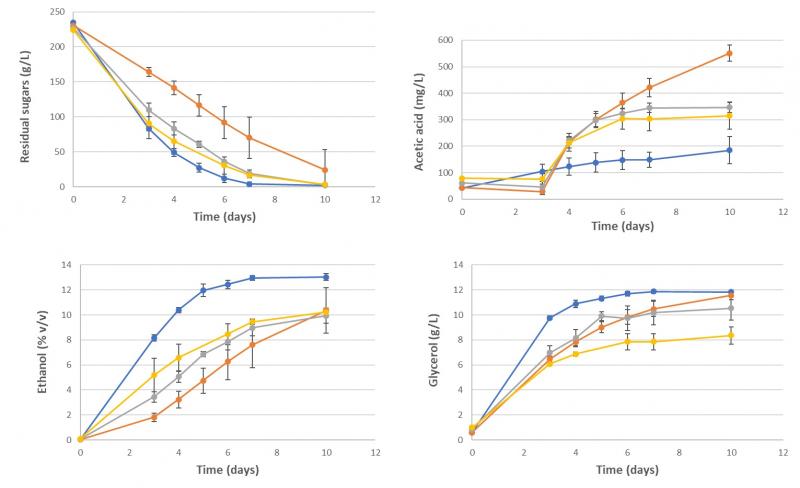As a continuation of its research line on reducing the alcohol content of wines, taking advantage of the ability of yeasts to respire part of the sugars in the juice, the MicroWine group of the ICVV proposes new fermentation conditions and new combinations of yeast strains. The process uses M. pulcherrima strain PR734 and S. cerevisiae strain PR1018 (or a commercial strain).
These new conditions allow the development of an even more robust process than those developed so far in this line. The system is less sensitive to changes in the aeration regime, especially because it allows aeration to be freely interrupted at the desired time, without negative consequences for wine quality. It also tolerates different levels of oxygenation. It is therefore a more robust and easily scalable process. A major advantage is that its industrial implementation will no longer be dependent on automated systems for dissolved oxygen control.
Under the optimised conditions, reductions of around 3 degrees in the alcohol content of the final wine (compared to conventional fermentation) are achieved, with acetic acid levels around 300 mg/L.
Further information: https://doi.org/10.1016/j.fm.2023.104344








